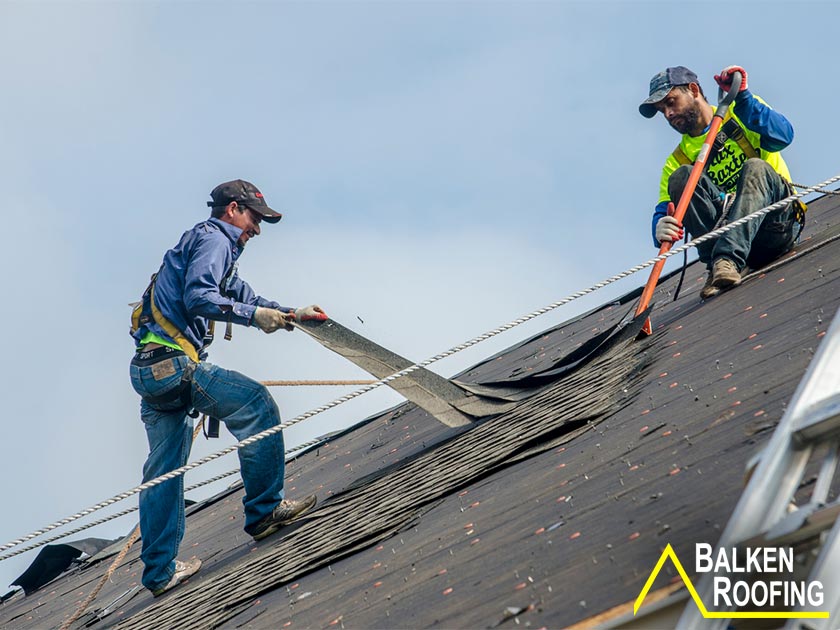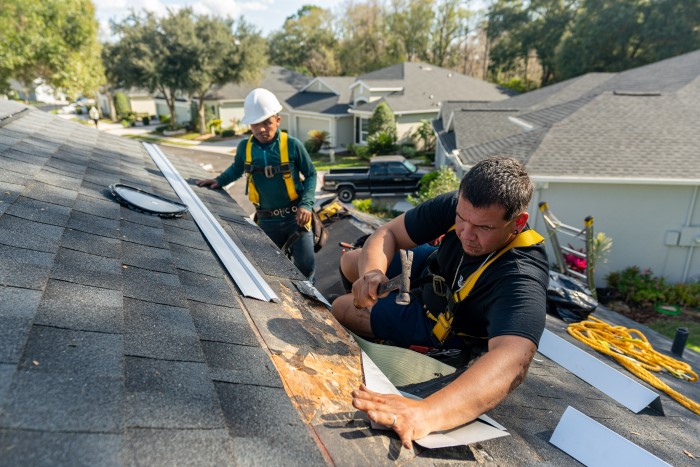Roofing Oahu: Expert Roofer for Your Oahu Residential or commercial property
Roofing Oahu: Expert Roofer for Your Oahu Residential or commercial property
Blog Article
Discovering the Various Kinds Of Roofs: Which One Is Finest for Your Home?
When thinking about the myriad kinds of roof coverings readily available, it is crucial to evaluate how each option aligns with your home's one-of-a-kind demands, including climate problems, visual choices, and architectural performance. From the traditional gable roofing that effectively channels rainwater to the modern level roof covering offering city flexibility, each design provides distinct advantages and obstacles.
Gable Roof Coverings
Saddleback roofs, identified by their triangular form and sloping sides, are a prominent choice amongst home owners looking for both aesthetic appeal and capability. This roof covering design efficiently enables reliable water overflow, decreasing the risk of water merging and succeeding damage. In addition, the steep slopes develop adequate attic room, which can be used for storage or also exchanged living locations.
One of the primary benefits of saddleback roofs is their ability to withstand extreme weather condition conditions. The layout assists in minimizing wind resistance, making them specifically appropriate for locations susceptible to tornados. Moreover, saddleback roofs can be created utilizing a selection of materials, consisting of shingles, floor tiles, and metal, giving house owners with flexibility in layout and budget plan.
From an architectural point of view, gable roof coverings can enhance the visual allure of a home, supplying a classic and timeless appearance. On the whole, gable roof coverings remain a popular alternative due to their equilibrium of usefulness and style, appealing to a large array of property owners.
Flat Roofs
While typically ignored for even more standard roofing styles, flat roofing systems provide distinct advantages that accommodate specific building demands and contemporary style preferences. These roofs are characterized by their marginal pitch, permitting effective use of space, particularly in city settings where making the most of square footage is essential.
One substantial benefit of level roofings is their adaptability. They can be used as additional space, such as roof gardens, patio areas, or photovoltaic panel installations, enhancing the capability of a home. Furthermore, flat roofings are usually simpler and more secure to navigate during upkeep, helping with fixings and assessments without the challenges postured by steep inclines.
Flat roof coverings can likewise be more economical in terms of products and installation. With an easier design, they commonly require less sources, equating right into lower labor expenses. However, it's vital to consider drain and waterproofing, as level roofing systems can be vulnerable to pooling water if not adequately created.

Hip Roof Coverings
Hip roofing systems stick out for their classy design and structural stability, making them a preferred choice among property owners. Identified by inclines on all 4 sides, hip roofs offer a well-balanced visual that enhances numerous building designs - roof repair oahu. The symmetrical nature of these roofs helps to distribute weight uniformly, improving stability and toughness
Among the vital benefits of hip roof coverings is their ability to withstand harsh climate condition. The sloped surfaces help with find more efficient water drainage and snow runoff, reducing the risk of leakages and architectural damages. Furthermore, the style lessens wind resistance, making hip roof coverings much less prone to wind uplift compared to other roofing system types.


Dropped Roofing Systems
Shed roof coverings, in comparison to the complexity of hip roof coverings, provide a structured and minimal layout that interest modern-day aesthetics. Defined by a single sloping surface area, lost roof coverings are usually made use of in modern architecture, yard sheds, and various other functional frameworks. This simpleness not just improves visual allure yet also enables for effective water overflow, making them appropriate for numerous climates.
One of the main advantages of shed roofing systems is their cost-effectiveness. With fewer materials needed and an uncomplicated setup process, homeowners can save both time and cash. The design also permits the unification of large windows or skylights, advertising all-natural light and creating spacious insides.
Nonetheless, it is important to think about the potential downsides, consisting of limited insulation options and the requirement for mindful layout to avoid excessive warmth buildup. In addition, lost roofings may not blend effortlessly with typical architecture, which could be a problem for some house owners.
Eventually, dropped roofings present a stylish and functional roof option for those seeking modernity and performance. When picking a roofing system kind, examining individual visual choices and practical needs will certainly lead home owners to the ideal choice for their distinct requirements.
Mansard Roofing Systems
Mansard roofs, identified by their distinctive four-sided style, are a trademark of French architecture that integrates beauty with functionality. This building style includes two inclines on each side, with the lower incline being steeper than the upper one. The unique arrangement enables for added living area in the top levels, making it a perfect selection for property owners looking for to maximize functional location without broadening the structure's footprint.
Among the substantial advantages of a mansard roof covering is its flexibility. It can be adjusted to various building designs, from Check Out Your URL traditional to contemporary, enhancing the aesthetic charm of any home. Furthermore, the enough space produced under the roof covering can easily fit dormer home windows, which enable natural light and ventilation, more enhancing the comfort of the living area.
Nonetheless, possible home owners must check my site take into consideration the upkeep demands associated with mansard roofs. Installment expenses may be higher compared to simpler roof layouts due to the intricacy of construction.
Conclusion
Each roof design presents one-of-a-kind advantages, such as the performance of gable roofing systems, the modern-day appeal of shed roofings, and the stability of hip roofings. Level roofing systems supply functionality for city environments, while mansard roofings provide extra living room despite higher installment costs.
From the traditional gable roofing system that successfully channels rainwater to the contemporary level roof offering metropolitan flexibility, each design presents unique benefits and obstacles (roof repair oahu). Additionally, the style lessens wind resistance, making hip roof coverings less susceptible to wind uplift contrasted to various other roof types
Dropped roofings, in comparison to the intricacy of hip roofs, provide a minimal and structured layout that allures to modern-day visual appeals. Each roof design presents distinct advantages, such as the effectiveness of gable roofings, the contemporary charm of shed roofings, and the security of hip roofings. Level roofings supply usefulness for city settings, while mansard roofings supply additional living space despite greater installment prices.
Report this page